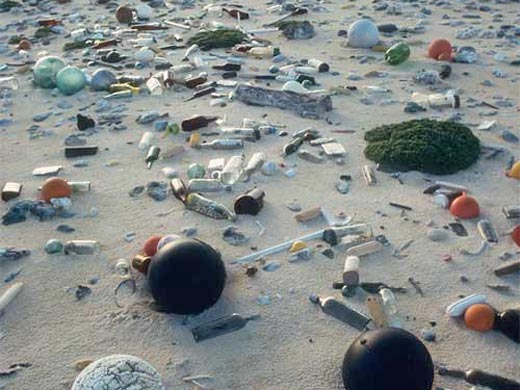Cleaning Up Hawaiian Island's Garbage

This Research in Action article was provided to LiveScience in partnership with the National Science Foundation.
Garbage on the east shore of Laysan Island in Hawaii, circa August-November 1990, as captured by photographer Milo Burcham. Home to the capital city and nearly a million people, the island of Oahu in the U.S. state of Hawaii is highly dependent on external resources. Over the past decade, large-scale agricultural production has diminished dramatically, leaving the island greatly reliant on imports for food and most other basic goods. A strong tourism sector and high levels of affluence contribute to per capita municipal waste generation rates exceeding all other U.S. states.
The only municipal landfill requires immediate expansion if it is to remain in operation, and it has proven extremely difficult to find additional disposal sites. Researchers performed an island-wide material flow analysis (MFA) as an innovative means of considering issues of import, export, consumption and substitution, resulting in long-term strategies for diminishing the generation of waste that could complement current local conservation and recycling efforts.
The findings indicate several opportunities for using domestic waste resources to substitute for imports and simultaneously reduce waste generation, particularly for construction materials. Legislative constraints and possible changes in this regard were also considered. Although past efforts by both the city and state governments to encourage on-island recycling and reuse have not achieved set goals, the MFA results suggest numerous opportunities that could be pursued to increase material self-sufficiency and/or reduce waste disposal by several hundred thousand short tons, enhancing the long-term sustainability of the island.
Details of these findings are available in the Journal of Industrial Ecology as part of a special issue on Applications of Material Flow Analysis, funded in part by the Environmental Protection Agency and the National Science Foundation.
Any opinions, findings, and conclusions or recommendations expressed in this material are those of the author and do not necessarily reflect the views of the National Science Foundation. See the Research in Action archive.
— Reid Lifset, Yale University
Sign up for the Live Science daily newsletter now
Get the world’s most fascinating discoveries delivered straight to your inbox.
Image Credit: Milo Burcham; Image for use by the National Science Foundation only and not to become public domain. Contact the photographer for rights to use image for any other purpose.










